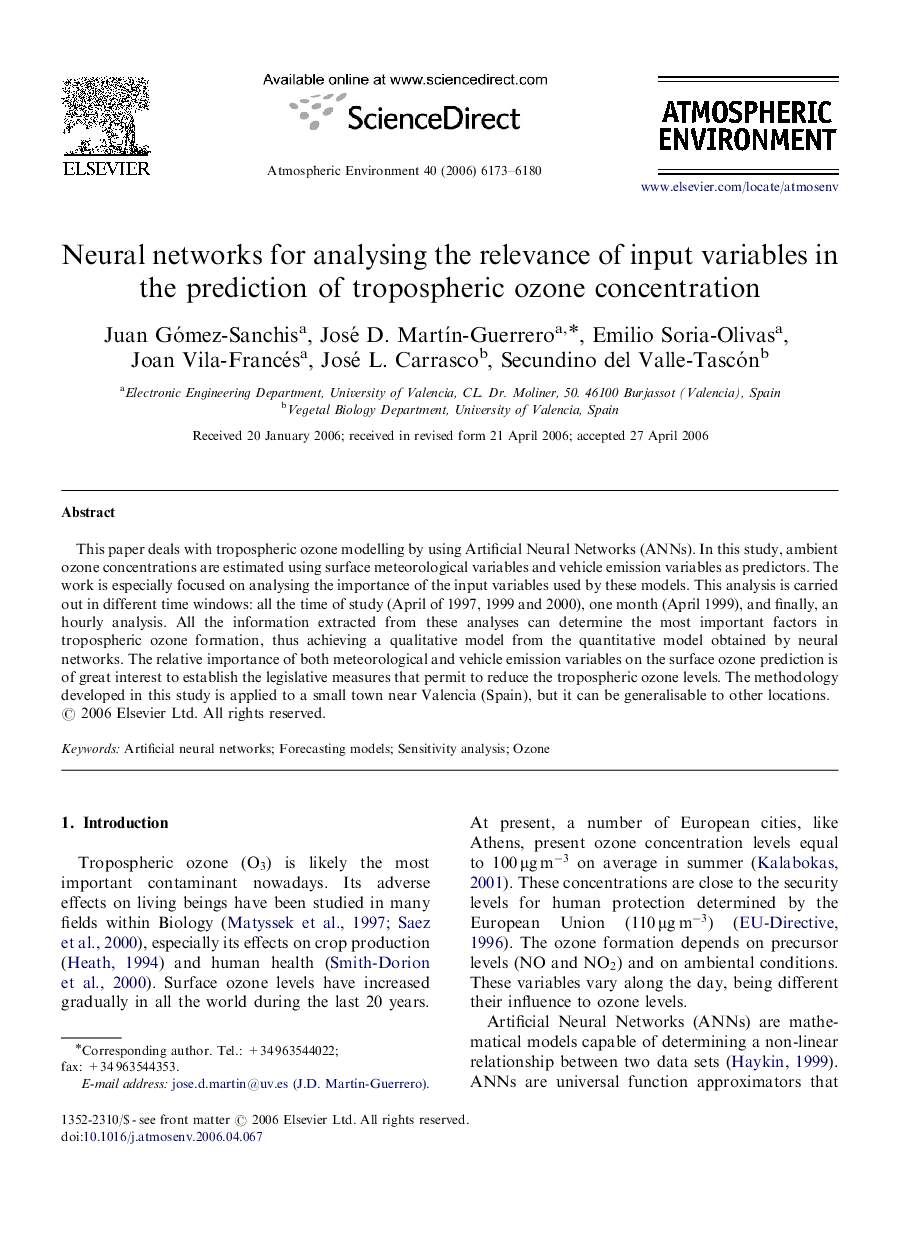| Article ID | Journal | Published Year | Pages | File Type |
|---|---|---|---|---|
| 4444098 | Atmospheric Environment | 2006 | 8 Pages |
This paper deals with tropospheric ozone modelling by using Artificial Neural Networks (ANNs). In this study, ambient ozone concentrations are estimated using surface meteorological variables and vehicle emission variables as predictors. The work is especially focused on analysing the importance of the input variables used by these models. This analysis is carried out in different time windows: all the time of study (April of 1997, 1999 and 2000), one month (April 1999), and finally, an hourly analysis. All the information extracted from these analyses can determine the most important factors in tropospheric ozone formation, thus achieving a qualitative model from the quantitative model obtained by neural networks. The relative importance of both meteorological and vehicle emission variables on the surface ozone prediction is of great interest to establish the legislative measures that permit to reduce the tropospheric ozone levels. The methodology developed in this study is applied to a small town near Valencia (Spain), but it can be generalisable to other locations.
